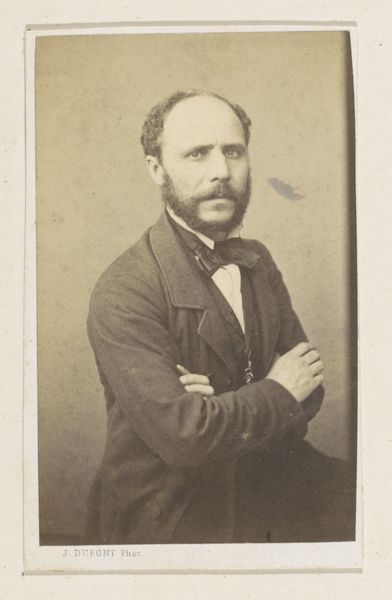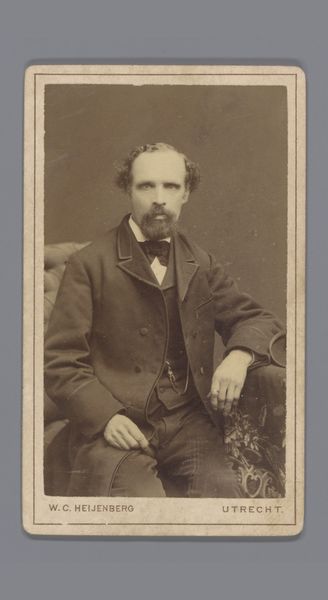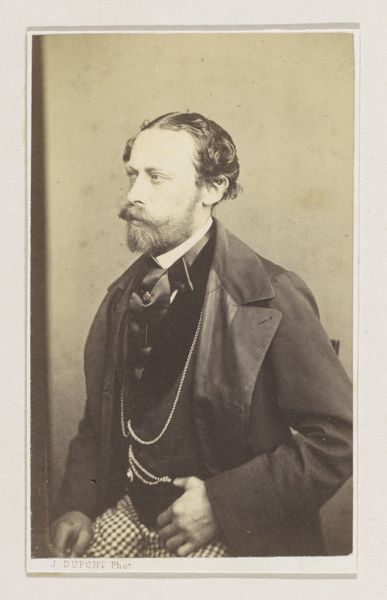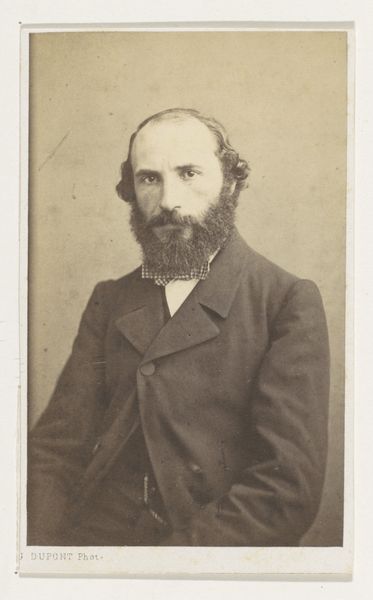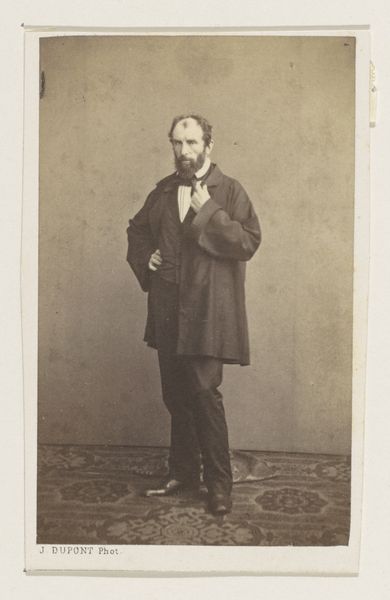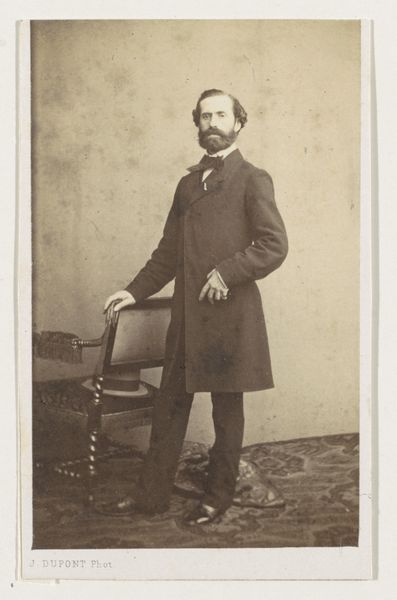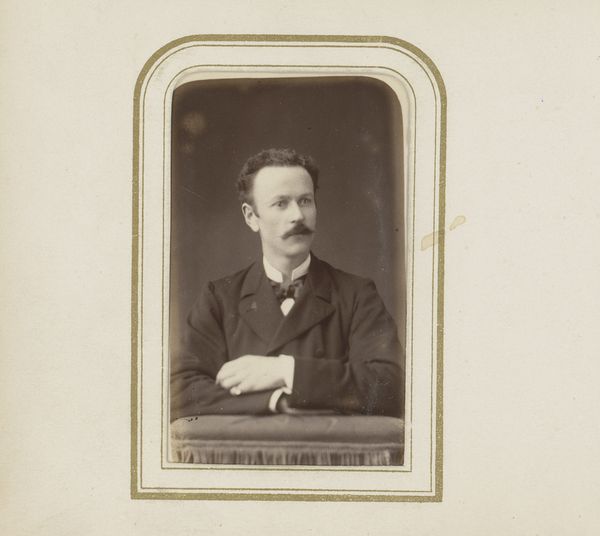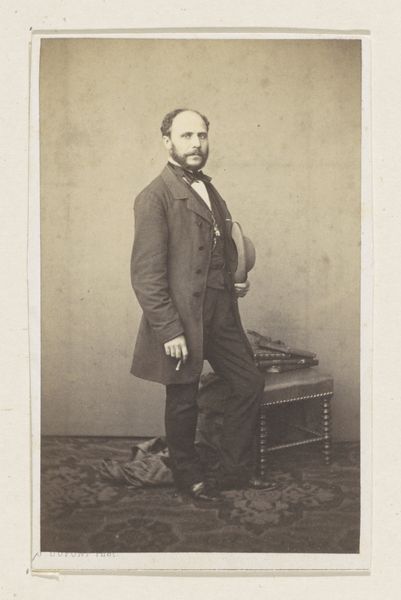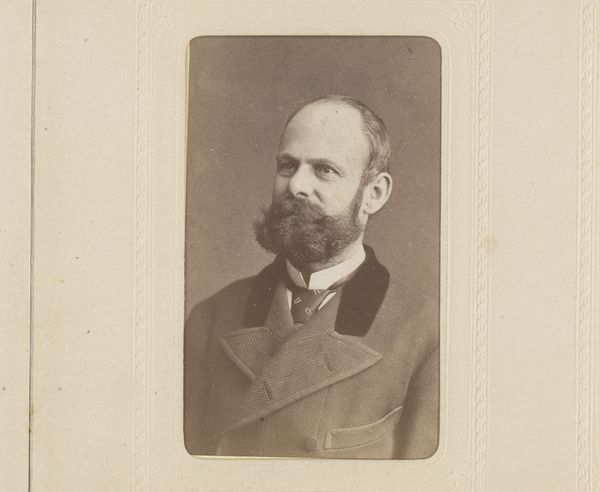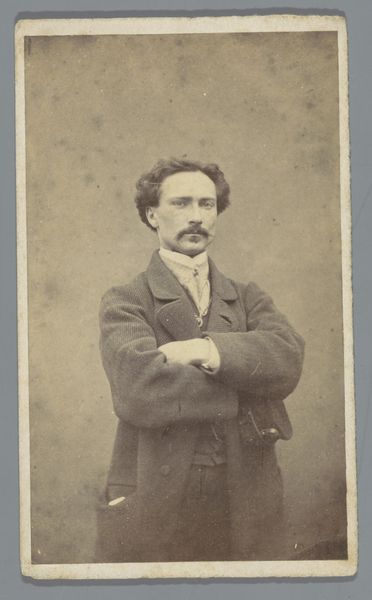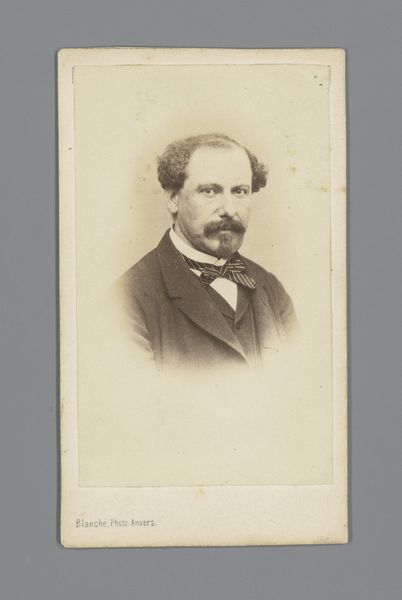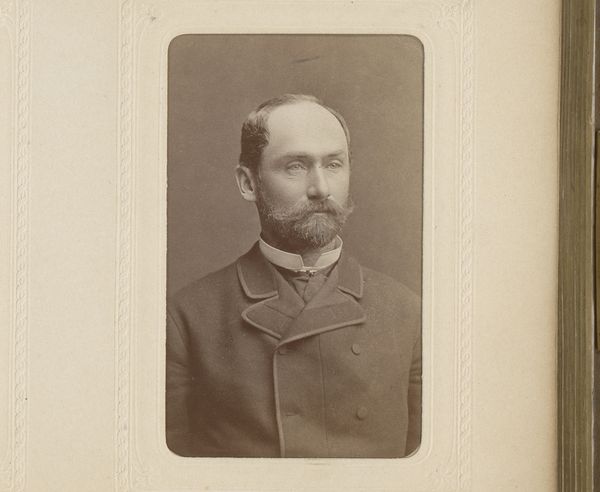
photography, gelatin-silver-print
#
portrait
#
archive photography
#
photography
#
historical photography
#
gelatin-silver-print
#
genre-painting
Dimensions: height 80 mm, width 54 mm, height 296 mm, width 225 mm
Copyright: Rijks Museum: Open Domain
Editor: This is "Studioportret van een man met snor en bakkebaarden," or "Studio Portrait of a Man with a Mustache and Sideburns," by Abdullah Frères, dating from around 1863 to 1866. It's a gelatin silver print. It feels very posed and formal, but also quite intimate, like a small window into the past. What stands out to you about this photograph? Curator: Well, it's interesting to consider this gelatin silver print as a commodity. We tend to view historical photography through the lens of art history, but what about the material conditions of its production and consumption? These photographs were products of specific chemical processes, wouldn't you say? And this particular example… think about the man depicted, his clothing. Editor: Absolutely. The cut of his jacket, the tie… they speak volumes about the social standing and aspirations of the subject. And you're right about the process. Gelatin silver prints require specific materials, from the silver salts to the paper itself. Was there a social hierarchy implicit even in the making of a simple photograph? Curator: Exactly! The availability of these materials, the knowledge required to manipulate them, the economic framework allowing individuals to commission such portraits… these aspects shaped the image as much as the photographer’s artistic vision or the subject's desire for self-representation. Were these materials difficult to get? What was involved in taking a photo then? Editor: It really shifts my perspective. I usually think about composition and light in photographs, but thinking about the socio-economic structures inherent in the medium opens up so many more avenues for interpretation. Curator: Indeed. By considering the photograph as an object deeply embedded in a web of material relations, we move beyond purely aesthetic considerations and understand its true historical significance, wouldn’t you say? Editor: I see that point. It’s a fresh look at a classic type of portrait! Thanks!
Comments
No comments
Be the first to comment and join the conversation on the ultimate creative platform.
